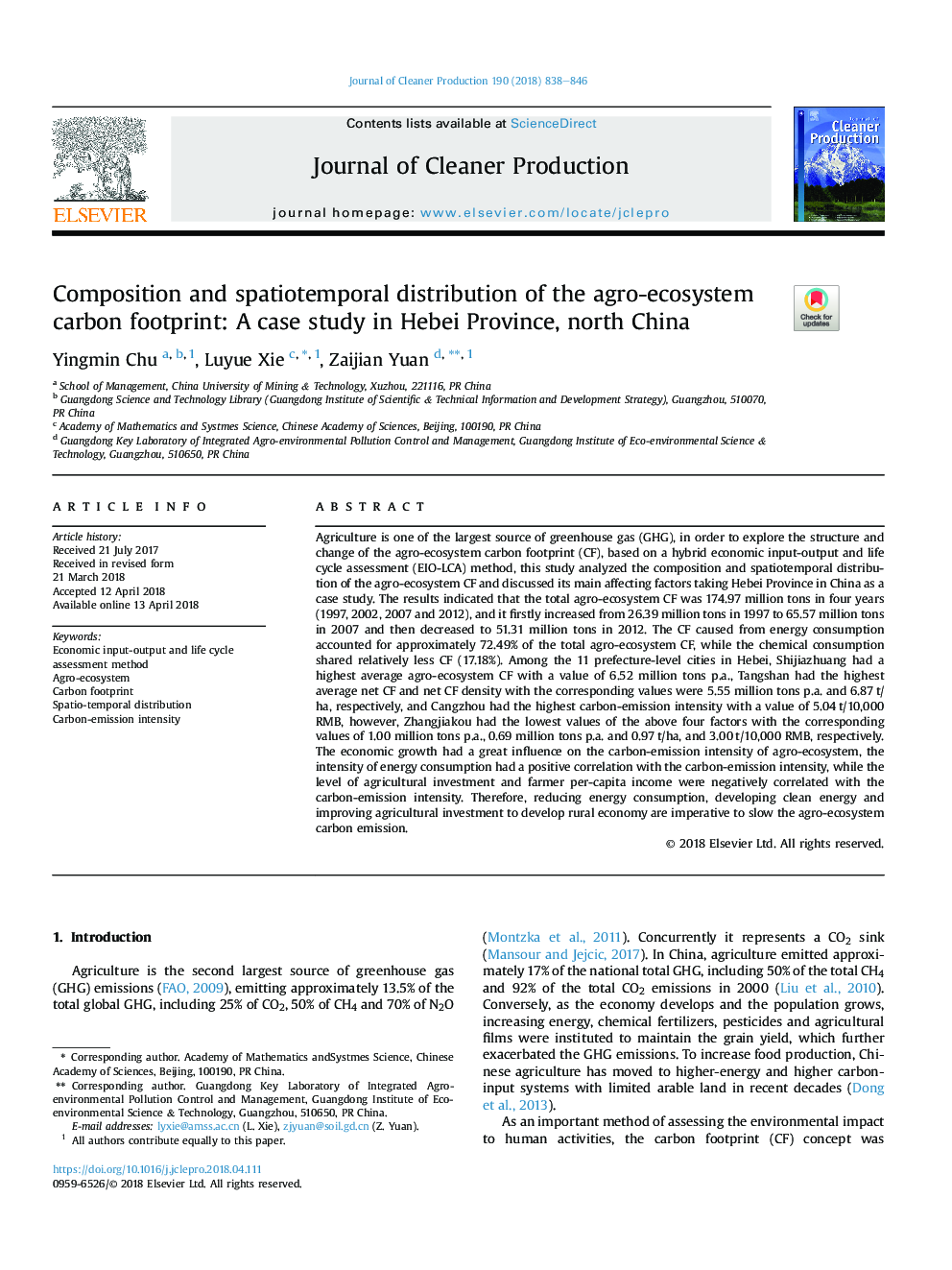| کد مقاله | کد نشریه | سال انتشار | مقاله انگلیسی | نسخه تمام متن |
|---|---|---|---|---|
| 8095045 | 1522063 | 2018 | 9 صفحه PDF | دانلود رایگان |
عنوان انگلیسی مقاله ISI
Composition and spatiotemporal distribution of the agro-ecosystem carbon footprint: A case study in Hebei Province, north China
ترجمه فارسی عنوان
ترکیب و توزیع فضایی از منظر کربن کشاورزی و اکوسیستم: مطالعه موردی در استان هبی، شمال چین
دانلود مقاله + سفارش ترجمه
دانلود مقاله ISI انگلیسی
رایگان برای ایرانیان
کلمات کلیدی
روش ارزیابی چرخه ورودی-خروجی اقتصادی، کشاورزی اکوسیستم، رد پای کربن، توزیع اسپکتیو-زمان، شدت انتشار کربن،
موضوعات مرتبط
مهندسی و علوم پایه
مهندسی انرژی
انرژی های تجدید پذیر، توسعه پایدار و محیط زیست
چکیده انگلیسی
Agriculture is one of the largest source of greenhouse gas (GHG), in order to explore the structure and change of the agro-ecosystem carbon footprint (CF), based on a hybrid economic input-output and life cycle assessment (EIO-LCA) method, this study analyzed the composition and spatiotemporal distribution of the agro-ecosystem CF and discussed its main affecting factors taking Hebei Province in China as a case study. The results indicated that the total agro-ecosystem CF was 174.97 million tons in four years (1997, 2002, 2007 and 2012), and it firstly increased from 26.39 million tons in 1997 to 65.57 million tons in 2007 and then decreased to 51.31 million tons in 2012. The CF caused from energy consumption accounted for approximately 72.49% of the total agro-ecosystem CF, while the chemical consumption shared relatively less CF (17.18%). Among the 11 prefecture-level cities in Hebei, Shijiazhuang had a highest average agro-ecosystem CF with a value of 6.52 million tons p.a., Tangshan had the highest average net CF and net CF density with the corresponding values were 5.55 million tons p.a. and 6.87â¯t/ha, respectively, and Cangzhou had the highest carbon-emission intensity with a value of 5.04â¯t/10,000 RMB, however, Zhangjiakou had the lowest values of the above four factors with the corresponding values of 1.00 million tons p.a., 0.69 million tons p.a. and 0.97â¯t/ha, and 3.00â¯t/10,000 RMB, respectively. The economic growth had a great influence on the carbon-emission intensity of agro-ecosystem, the intensity of energy consumption had a positive correlation with the carbon-emission intensity, while the level of agricultural investment and farmer per-capita income were negatively correlated with the carbon-emission intensity. Therefore, reducing energy consumption, developing clean energy and improving agricultural investment to develop rural economy are imperative to slow the agro-ecosystem carbon emission.
ناشر
Database: Elsevier - ScienceDirect (ساینس دایرکت)
Journal: Journal of Cleaner Production - Volume 190, 20 July 2018, Pages 838-846
Journal: Journal of Cleaner Production - Volume 190, 20 July 2018, Pages 838-846
نویسندگان
Yingmin Chu, Luyue Xie, Zaijian Yuan,
